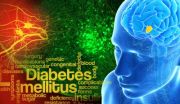(Press-News.org) ANN ARBOR, Mich. — Babies can learn what to fear in the first days of life just by smelling the odor of their distressed mothers, new research suggests. And not just "natural" fears: If a mother experienced something before pregnancy that made her fear something specific, her baby will quickly learn to fear it too -- through the odor she gives off when she feels fear.
In the first direct observation of this kind of fear transmission, a team of University of Michigan Medical School and New York University studied mother rats who had learned to fear the smell of peppermint – and showed how they "taught" this fear to their babies in their first days of life through their alarm odor released during distress.
In a new paper in the Proceedings of the National Academy of Sciences, the team reports how they pinpointed the specific area of the brain where this fear transmission takes root in the earliest days of life.
Their findings in animals may help explain a phenomenon that has puzzled mental health experts for generations: how a mother's traumatic experience can affect her children in profound ways, even when it happened long before they were born.
The researchers also hope their work will lead to better understanding of why not all children of traumatized mothers, or of mothers with major phobias, other anxiety disorders or major depression, experience the same effects.
"During the early days of an infant rat's life, they are immune to learning information about environmental dangers. But if their mother is the source of threat information, we have shown they can learn from her and produce lasting memories," says Jacek Debiec, M.D., Ph.D., the U-M psychiatrist and neuroscientist who led the research.
"Our research demonstrates that infants can learn from maternal expression of fear, very early in life," he adds. "Before they can even make their own experiences, they basically acquire their mothers' experiences. Most importantly, these maternally-transmitted memories are long-lived, whereas other types of infant learning, if not repeated, rapidly perish."
Peering inside the fearful brain
Debiec, who treats children and mothers with anxiety and other conditions in the U-M Department of Psychiatry, notes that the research on rats allows scientists to see what's going on inside the brain during fear transmission, in ways they could never do in humans.
He began the research during his fellowship at NYU with Regina Marie Sullivan, Ph.D., senior author of the new paper, and continues it in his new lab at U-M's Molecular and Behavioral Neuroscience Institute.
The researchers taught female rats to fear the smell of peppermint by exposing them to mild, unpleasant electric shocks while they smelled the scent, before they were pregnant. Then after they gave birth, the team exposed the mothers to just the minty smell, without the shocks, to provoke the fear response. They also used a comparison group of female rats that didn't fear peppermint.
They exposed the pups of both groups of mothers to the peppermint smell, under many different conditions with and without their mothers present.
Using special brain imaging, and studies of genetic activity in individual brain cells and cortisol in the blood, they zeroed in on a brain structure called the lateral amygdala as the key location for learning fears. During later life, this area is key to detecting and planning response to threats – so it makes sense that it would also be the hub for learning new fears.
But the fact that these fears could be learned in a way that lasted, during a time when the baby rat's ability to learn any fears directly was naturally suppressed, is what makes the new findings so interesting, says Debiec.
The team even showed that the newborns could learn their mothers' fears even when the mothers weren't present. Just the piped-in scent of their mother reacting to the peppermint odor she feared was enough to make them fear the same thing.
And when the researchers gave the baby rats a substance that blocked activity in the amygdala, they failed to learn the fear of peppermint smell from their mothers. This suggests, Debiec says, that there may be ways to intervene to prevent children from learning irrational or harmful fear responses from their mothers, or reduce their impact.
From animals to humans: next steps
The new research builds on what scientists have learned over time about the fear circuitry in the brain, and what can go wrong with it. That work has helped psychiatrists develop new treatments for human patients with phobias and other anxiety disorders – for instance, exposure therapy that helps them overcome fears by gradually confronting the thing or experience that causes their fear.
In much the same way, Debiec hopes that exploring the roots of fear in infancy, and how maternal trauma can affect subsequent generations, could help human patients. While it's too soon to know if the same odor-based effect happens between human mothers and babies, the role of a mother's scent in calming human babies has been shown.
Debiec, who hails from Poland, recalls working with the grown children of Holocaust survivors, who experienced nightmares, avoidance instincts and even flashbacks related to traumatic experiences they never had themselves. While they would have learned about the Holocaust from their parents, this deeply ingrained fear suggests something more at work, he says.
INFORMATION:
Going forward, he hopes to work with U-M researchers to observe human infants and their mothers -- including U-M psychiatrist Maria Muzik, M.D. and psychologist Kate Rosenblum, Ph.D., who run a Women and Infants Mental Health clinic and research program and also work with military families. The program is currently seeking women and their children to take part in a range of studies; those interested in learning more can call the U-M Mental Health Research Line at (734) 232-0255.
The research was supported by the National Institutes of Health (DC009910, MH091451), and by a, NARSAD Young Investigator Award from the Brain and Behavior Research Foundation, and University of Michigan funds. Reference: http://www.pnas.org/cgi/doi/10.1073/pnas.1316740111 END
Learning the smell of fear: Mothers teach babies their own fears via odor, research finds
Research in rats may help explain how trauma's effects can span generations
2014-07-28
ELSE PRESS RELEASES FROM THIS DATE:
New study confirms water vapor as global warming amplifier
2014-07-28
MIAMI – A new study from scientists at the University of Miami Rosenstiel School of Marine and Atmospheric Science and colleagues confirms rising levels of water vapor in the upper troposphere – a key amplifier of global warming – will intensify climate change impacts over the next decades. The new study is the first to show that increased water vapor concentrations in the atmosphere are a direct result of human activities.
"The study is the first to confirm that human activities have increased water vapor in the upper troposphere," said Brian Soden, professor of atmospheric ...
Impact of Deepwater Horizon oil spill on coral is deeper and broader than predicted
2014-07-28
A new discovery of two additional coral communities showing signs of damage from the Deepwater Horizon oil spill expands the impact footprint of the 2010 spill in the Gulf of Mexico. The discovery was made by a team led by Charles Fisher, professor of biology at Penn State University. A paper describing this work and additional impacts of human activity on corals in the Gulf of Mexico will be published during the last week of July 2014 in the online Early Edition of the journal Proceedings of the National Academy of Sciences.
"The footprint of the impact of the spill ...
The bit of your brain that signals how bad things could be
2014-07-28
An evolutionarily ancient and tiny part of the brain tracks expectations about nasty events, finds new UCL research.
The study, published in Proceedings of the National Academy of Sciences, demonstrates for the first time that the human habenula, half the size of a pea, tracks predictions about negative events, like painful electric shocks, suggesting a role in learning from bad experiences.
Brain scans from 23 healthy volunteers showed that the habenula activates in response to pictures associated with painful electric shocks, with the opposite occurring for pictures ...
Cell's recycling center implicated in division decisions
2014-07-28
Most cells do not divide unless there is enough oxygen present to support their offspring, but certain cancer cells and other cell types circumvent this rule. Researchers at The Johns Hopkins University have now identified a mechanism that overrides the cells' warning signals, enabling cancers to continue to divide even without a robust blood supply. In the process, the researchers found that lysosomes — the cell's protein "recycling centers" — help govern cell division decisions. They also uncovered new evidence that certain drugs can halt the growth of tumors that have ...
Facial features are the key to first impressions
2014-07-28
A new study by researchers in the Department of Psychology at the University of York shows that it is possible to accurately predict first impressions using measurements of physical features in everyday images of faces, such as those found on social media.
When we look at a picture of a face we rapidly form judgements about a person's character, for example whether they are friendly, trustworthy or competent. Even though it is not clear how accurate they are, these first impressions can influence our subsequent behaviour (for example, judgements of competence based on ...
Scripps Florida scientists find genetic mutations linked to salivary gland tumors
2014-07-28
JUPITER, FL - July 28, 2014 – Research conducted at the Florida campus of The Scripps Research Institute (TSRI) has discovered links between a set of genes known to promote tumor growth and mucoepidermoid carcinoma, an oral cancer that affects the salivary glands. The discovery could help physicians develop new treatments that target the cancer's underlying genetic causes.
The research, recently published online ahead of print by the Proceedings of the National Academy of Sciences, shows that a pair of proteins joined together by a genetic mutation—known as CRTC1/MAML2 ...
Glucose 'control switch' in the brain key to both types of diabetes
2014-07-28
Researchers at Yale School of Medicine have pinpointed a mechanism in part of the brain that is key to sensing glucose levels in the blood, linking it to both type 1 and type 2 diabetes. The findings are published in the July 28 issue of Proceedings of the National Academies of Sciences.
"We've discovered that the prolyl endopeptidase enzyme — located in a part of the hypothalamus known as the ventromedial nucleus — sets a series of steps in motion that control glucose levels in the blood," said lead author Sabrina Diano, professor in the Departments of Obstetrics, Gynecology ...
Physicists unlock nature of high-temperature superconductivity
2014-07-28
Physicists have identified the "quantum glue" that underlies a promising type of superconductivity -- a crucial step towards the creation of energy superhighways that conduct electricity without current loss.
The research, published online in the Proceedings of the National Academy of Sciences, is a collaboration between theoretical physicists led by Dirk Morr, professor of physics at the University of Illinois at Chicago, and experimentalists led by Seamus J.C. Davis of Cornell University and Brookhaven National Laboratory.
The earliest superconducting materials required ...
Google searches hold key to future market crashes
2014-07-28
A team of researchers from Warwick Business School and Boston University have developed a method to automatically identify topics that people search for on Google before subsequent stock market falls.
Applied to data between 2004 and 2012, the method shows that increases in searches for business and politics preceded falls in the stock market. The study, 'Quantifying the semantics of search behavior before stock market moves,' was published in the Proceedings of the National Academy of Sciences.
The researchers suggest that this method could be applied to help identify ...
Memory relies on astrocytes, the brain's lesser known cells
2014-07-28
VIDEO:
Salk scientists have discovered the link between astrocytes and memory.
Click here for more information.
LA JOLLA—When you're expecting something—like the meal you've ordered at a restaurant—or when something captures your interest, unique electrical rhythms sweep through your brain.
These waves are called gamma oscillations and they reflect a symphony of cells—both excitatory and inhibitory—playing together in an orchestrated way. Though their role has been debated, ...
LAST 30 PRESS RELEASES:
Artificial intelligence to be used for the detection of common eye disease
A roadmap for digital neuroscience
Radiologists propose actions to combat climate change
SwRI to discuss connected vehicle data exchanges, AI tools at 2024 ITS America Conference & Expo
Announcing the second cohort of the Hevolution/AFAR new investigator awardees in aging biology and geroscience research
Advances in understanding the evolution of stomach loss in agastric fishes
Social media affects people’s views on mental illness
Aerogel-based PCMs improve thermal management, reduce microwave emissions in electronic devices
Undernourished household members at increased risk for developing TB after exposure
A non-equivalent co-doped strategy to effectively improve the electrical properties of BIT-based high-temperature piezoelectric ceramics
RAMP1 protects hepatocytes against ischemia-reperfusion injury by inhibiting the ERK/YAP pathway
Molecular mechanism of chemical diversity of thermophilic fungus and its ecological and biological functions
Engaging pharmacists to improve atrial fibrillation care
Exploring brain synchronization patterns during social interactions
Unveiling the molecular functions of lipid droplet proteins in Arabidopsis thaliana leaves
Perfecting the view on a crystal’s imperfection
Fossil frogs share their skincare secrets
Existing drugs studied in patients with rare immune diseases
Loma Linda University study reveals alarming rates of pediatric injuries from mechanical bull riding
Excessive pregnancy weight gain and substantial postpartum weight retention common in military health care beneficiaries
Odor-causing bacteria in armpits targeted using bacteriophage-derived lysin
Women’s heart disease is underdiagnosed, but new machine learning models can help solve this problem
Extracting high-purity gold from electrical and electronic waste
Tropical fish are invading Australian ocean water
No bull: How creating less-gassy cows could help fight climate change
ECU researchers call for enhanced research into common post-stroke condition
SharpeRatio@k: novel metric for evaluation of risk-return tradeoff in off-policy evaluation
$1.8M NIH grant will help researchers follow a virus on its path to the nucleus
Follow-up 50 years on finds landmark steroid study remains safe
Active military service may heighten women’s risk of having low birthweight babies
[Press-News.org] Learning the smell of fear: Mothers teach babies their own fears via odor, research findsResearch in rats may help explain how trauma's effects can span generations





